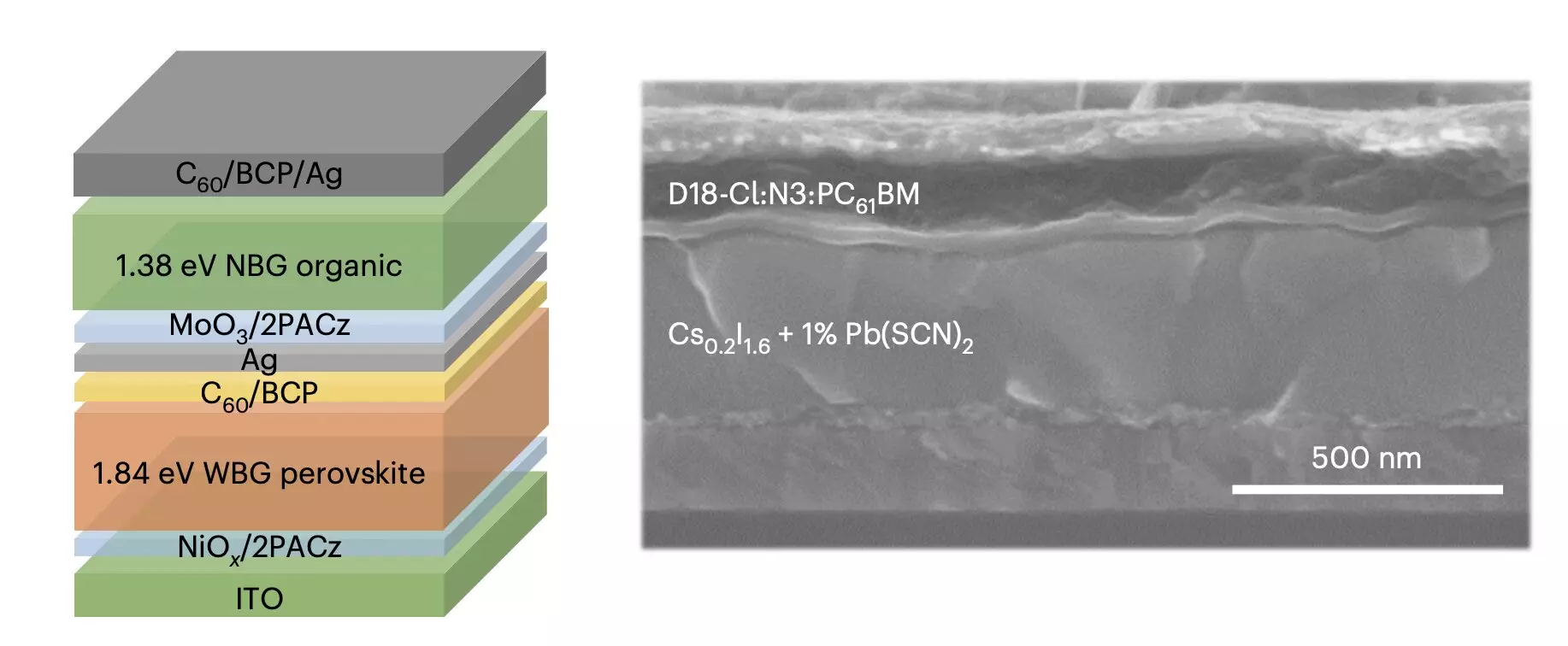Solar cell technology has been rapidly evolving in recent years, with researchers focusing on innovative designs to enhance efficiency and stability. One of the most promising advancements in this field is the development of organic solar cells based on perovskite materials. These cells have shown great potential due to their lower production costs, flexibility, and tunability compared to traditional silicon-based solar cells. However, the current power conversion efficiency (PCE) of organic solar cells is still lower than that of silicon solar cells, prompting researchers to explore new strategies to boost their performance.
While the integration of perovskite materials in organic solar cells has the potential to significantly improve efficiency and stability, there are challenges that need to be addressed. One major obstacle is the process of phase segregation in wide-bandgap perovskites, which can degrade the performance of the cells and affect recombination processes at the interconnecting layer of tandem solar cells. Researchers have been working to find ways to suppress phase segregation and enhance the overall performance of perovskite/organic tandem solar cells.
A recent study conducted by researchers at Soochow University’s Suzhou Key Laboratory of Novel Semiconductor-optoelectronic materials and devices introduced a novel strategy to suppress phase segregation in wide-bandgap perovskites. By incorporating a pseudo-triple-halide alloy in mixed halide perovskites based on iodine and bromine, the researchers were able to enhance crystallization and reduce grain boundaries, ultimately preventing halide elements from separating inside the solar cells. This innovative approach led to improved efficiency and stability in perovskite/organic tandem solar cells.
The researchers tested their strategy on the development of perovskite/organic tandem solar cells and observed promising results. The tandem solar cells achieved a PCE of 25.82%, a certified PCE of 25.06%, and an operational stability of 1,000 hours. These findings demonstrate the potential of the proposed methodology to enhance the performance of wide-bandgap perovskites and pave the way for the development of new perovskite/organic photovoltaics with high efficiency and stability under varying light intensities. Moving forward, this research could be expanded to explore different compositions of wide-bandgap perovskites, contributing to the advancement of solar cell technology.
The integration of perovskite materials in organic solar cells has opened up new opportunities for enhancing efficiency and stability in solar cell technology. By addressing the challenges of phase segregation in wide-bandgap perovskites through innovative strategies, researchers have made significant progress towards developing high-performance perovskite/organic tandem solar cells. The findings from this study have laid the groundwork for further advancements in the field of solar energy, with the potential to revolutionize the way we harness and utilize renewable energy sources.


Leave a Reply